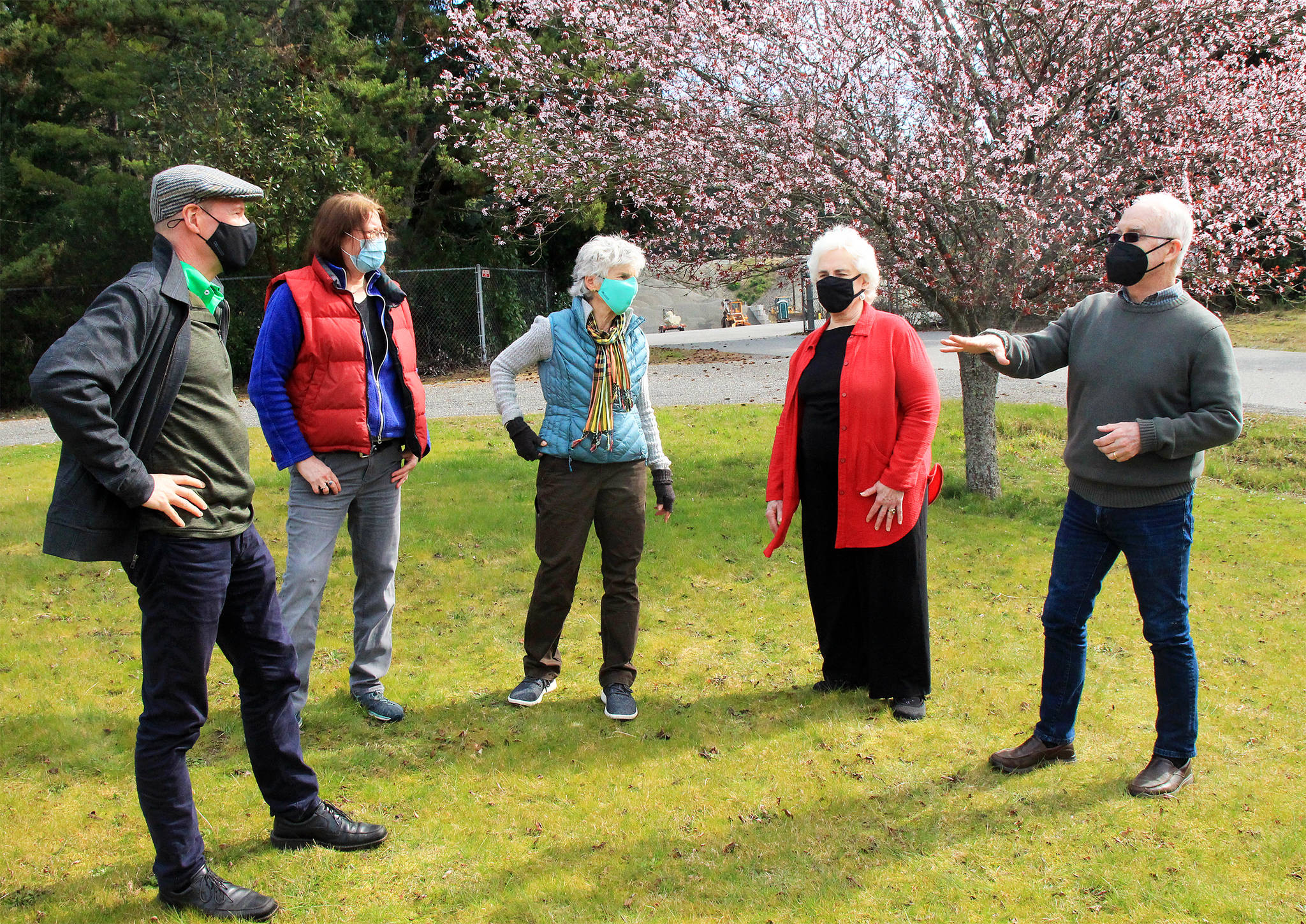A confluence of serendipitous circumstances has spawned a one-of-a-kind affordable housing project on South Whidbey that joins together nonprofit organizations with a private landowner, with the possibility of local government partnering someday.
A steering committee made up of representatives from Goosefoot Community Fund, the Henny Family and Legacy Family Tree, LLC and Island Senior Resources is moving forward with the creation of a master plan for innovative and sustainable workforce housing in Bayview.
Two other major property owners in the area, Island County and the WhidbeyHealth Hospital District, are also supportive of the effort.
The county designated Bayview as a “rural area of intense development,” or RAID, which makes it one of just three places on South Whidbey where multi-family and mixed-use projects can be built.
“Our hope is to develop a shared vision and a master development plan that will guide predictable and sustainable development in Bayview, rather than a piecemeal approach,” Goosefoot Executive Director Sandra Whiting wrote in a letter to other Bayview property owners.
The project is still in its relative infancy, but it’s undeniably a serious effort. Goosefoot, a nonprofit organization intrinsically tied to Bayview and known for accomplishing lofty goals, hired Schemata Workshop of Seattle to lead a master planning team that also includes Spectrum Development and MIG, a civil engineering firm.
The members of the steering committee speak with determination and excitement about the possibilities.
Marian Myszkowski, director of programs for Goosefoot, said affordable housing has long been a priority concern for the organization, but it hadn’t been able to move forward with a proposal until now.
“We finally feel like we have the right group of people at the right time,” Goosefoot President Jean Singer agreed.
Cheryn Weiser, executive director of Island Senior Resources, said the collaborative effort is the most impressive she’s seen in nearly three decades on the island.
George Henny, of Whidbey Telecom fame, said the benevolent collaboration has the opportunity to create something that transcends a typical apartment complex to become an “interdependent ecosystem” of residents and a place that reflects the values of South Whidbey residents.
“What we really have to think about is community building,” he said, “creating places where people can find a sense of home, a sense of belonging, a sense of community.”
Henny said his father purchased Bayview property in the early 1970s, believing that the area could become a community hub where people lived. While that didn’t happen, Henny said he hopes to assume the mantle and help bring the vision to life.
Goosefoot Vice President Chris Salomone, the former community development director for Bellevue, pointed out that a dearth of affordable housing is a nationwide problem that has serious social and economic implications. Building affordable housing can be difficult and rife with pitfalls, he said, but the effort in Bayview possesses three keys to success: adequate property, correct zoning and neighborhood support.
The last factor is the most important, he opined.
“Neighbors kill affordable housing because there is a stigma,” he said, “Which is really unfair.”
The steering committee’s concept is to have a mix of apartments and townhouses for a Whidbey workforce of waiters and waitresses, baristas, clerks, health care workers, county employees, newspaper reporters and others.
Many people who work lower-paying jobs often cannot find housing on the island and end up commuting. The steering committee members emphasized that more affordable housing means more people are able to live on the island, which would have a positive ripple effect across the community. Businesses would find it easier to find and retain employees, who in turn would utilize local businesses. Fewer people would be on the roads.
More people will be active, engaged members of the community, the steering committee members emphasized.
Weiser said Senior Services would benefit since many of the people who work for the agency need affordable housing to survive.
Salomone explained that the Bayview RAID is about 100 acres, half of which is vacant. The major landowners are the Henny family, the county, WhidbeyHealth and Goosefoot, which purchased and renovated the historic Bayview Cash Store 20 years ago and more recently opened the Goose Community Grocer. The area being eyed for housing is on the east side of Highway 525.
The current concept is to build a mix of apartments and townhouses. Singer said it’s too early in the process to know how many units might be built, but the hope is to maximize the number while still retaining creative and aesthetic design elements, open space, paths and other recreational uses as part of the project.
The construction of the planned development is a “10- to 20-year project” that will be completed in phases, she said.
Septic capacity will likely be the greatest restraint of the project. Septic consultants were hired to look at different alternatives, including the latest state-of-the-art, green technology.
Salomone pointed out that there already are groceries, restaurants, social services, transit, a hardware store and other businesses within walking distance of the project; usually these amenities show up following housing construction.
“It’s just serendipity that housing is the last thing to go in,” he said.



